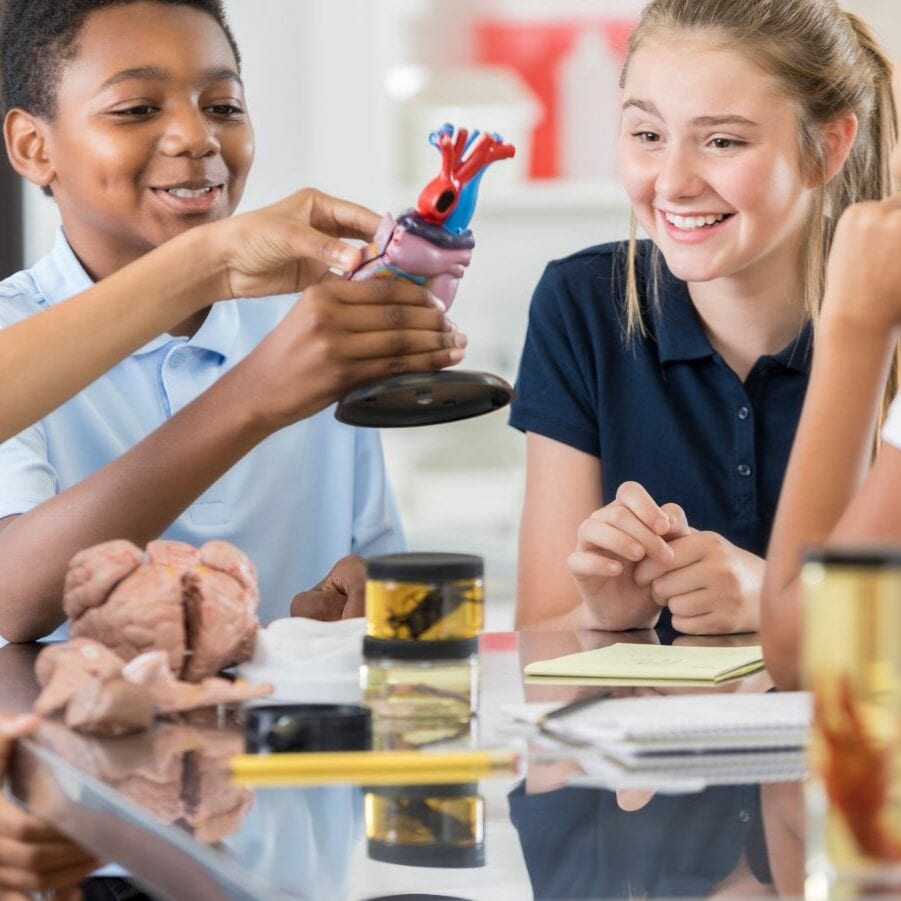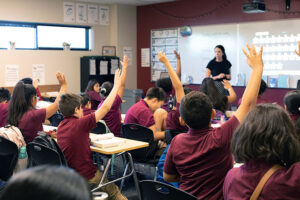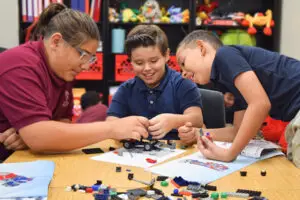Avondale
Buckeye & 107th Ave
Camelback
Camelback & 67th Ave
Desert Sky
McDowell & 59th Ave
Flower
Thomas & 35th Ave
Glendale
Glendale & 45th
Little Rock
State Rt 70 & David O Dodd Rd
MASSA
Valencia & 12th AvePeoria
Peoria & 79th Ave
Prince
Prince & Flowing WellsSouth Mountain
Baseline & 15th Ave
STEM & COMPUTER SCIENCE PROGRAMS AT AMS
Putting Students on a Path to Prosperity
Like you, AMS wants the very best for your child, and we want to encourage our students to take concrete steps toward pursuing an amazing future. To move into high-paying, technology-focused jobs in science, computer science, and engineering, our middle school students must be well prepared for the challenging high school courses they will need to take. Our K-5 students need foundational skills to succeed at using digital tools for schoolwork, to become responsible digital citizens, and to design and create using robotics and computer programming.
AMS’s programs provide students a strong introduction to the world of STEM and Computer Science—a world in which students may lay the path to a prosperous future as early as kindergarten. AMS’s programs will ensure that your child becomes both a problem solver and an innovator and is aware of science and technology’s role in shaping our society. They will have ample opportunities to apply scientific and technical knowledge to solve interesting, relevant, and important problems.
Our STEM & CS programs truly support the AMS vision to transform our scholars into global visionaries: we aim to transform today’s students into the next generation of STEM innovators by helping each student develop a love of science, technology, engineering, and math.


Program Overview: AMS Science, Computer Science, and Engineering
AMS has adopted nationally recognized academic programs for science, computer science, and engineering to help ready our students for jobs of the future, many that have yet to be created. Our science programs tap into children’s natural fascination with and curiosity about the world, providing them with a scientific foundation to critically reason about their observations. The engineering program is integrated with the science program, and helps students apply scientific knowledge to design solutions to relevant personal and societal problems. The computer science program provides instruction for all grades with topics ranging from blocks-based programming of simple robots to web design and Python.

Computer Science
AMS Science emphasizes engagement with science starting with phenomena to which scholars can connect to explore understandings based on principles of scientific reasoning. K-5 and middle school scholars investigate phenomena using labs that teach them the practical skills of science along with the mindset to persist. The engineering component of science, consistent with state standards, helps scholars understand how design serves human need as well as the potential for unintended consequences.
All scholars at AMS, K to 8, take Computer Science. The computer science courses is academically rigorous and designed for all students; no prior experience is needed. In computer science, scholars learn responsible technology use through lessons in digital citizenship. They learn practical digital skills including keyboarding and the effective use of document, spreadsheet, and presentation tools. K-2 scholars learn coding using a curriculum that views coding as a literacy and thereby integrates coding and literacy instruction. Grade 3-5 scholars learn coding using simple block-based language that support creative expression, and middle school scholars learn about coding through modules from an internationally renowned curriculum that includes web design, development, cybersecurity and artificial intelligence.
All campuses offer fully equipped facilities that are brand new, or recently updated to give your child access to authentic learning experiences. Science and engineering labs offer space for inquiry and problem solving with experiments and design projects. Computer labs are equipped with desktop or laptop computers, programmable robots, and programmable microcontrollers. Laptops on carts are available for use in other classrooms to support the use of technology for learning in multiple subjects.

Clubs and Extracurricular Activities
All students are provided regular opportunities to apply math and science principles in class and in extracurricular activities through academic competitions and clubs.
For example, most AMS schools have access to robotics clubs so that students gain firsthand experience using their skills to create a product with real world results. Science Olympiad, a national program designed to bring science, technology, engineering, and math to all students, is also incorporated into the AMS middle school science curriculum and as an after-school club so that students may use their STEM & CS skills in school and in competition outside of the classroom.

Nearly 8.6 million STEMP jobs in 2015
There were nearly 8.6 million STEM jobs in May 2015, representing 6.2 percent of U.S. employment. Computer
occupations made up nearly 45 percent of STEM employment, and engineers made up an additional 19 percent.
Mathematical science occupations and architects, surveyors, and cartographers combined made up less than 4 percent
of STEM employment.
Ninety-three out of 100 STEM occupations had wages above the national average
Wages for STEM occupations varied vastly. The national average wage for all STEM occupations was $87,570,
nearly double the national average wage for non-STEM occupations ($45,700). Ninety-three out of 100 STEM
occupations had wages significantly above the national average wage for all occupations of $48,320
STEM occupations had above-average growth
Employment in STEM occupations grew by 10.5 percent, or 817,260 jobs, between May 2009 and May 2015,
compared with 5.2 percent net growth in non-STEM occupations. Computer occupations and engineers were among
the types of STEM occupations with the highest job gains.
Projected growth rates for types of STEM occupations
The STEM group that is projected to grow fastest from 2014 to 2024 is the mathematical science occupations group
at 28.2 percent, compared with the average projected growth for all occupations of 6.5 percent.
Projected new jobs for types of STEM occupations
Employment in computer occupations is projected to increase by 12.5 percent from 2014 to 2024, and due to its large
employment size, this growth is expected to result in nearly half a million new jobs, far more than any other STEM
group. The group projected to add the second largest number of new jobs from 2014 to 2024 is engineering
occupations, with 65,000 new jobs.
Projected job openings for types of STEM occupations
Job openings show the combination of new jobs and jobs expected to result from workers permanently leaving
occupations and needing to be replaced. The computer occupational group is projected to yield over 1 million job
openings from 2014 to 2024. The smallest number of job openings projected are in the architects, surveyors, and
cartographers group, at only 52,500 projected openings.
Industries with more STEM employment had higher wages
Industries with higher shares of STEM occupations typically had higher wages. STEM occupations made up over
one-third of employment in professional, scientific, and technical services, which includes activities like computer
systems design, engineering services, and research and development services.
STEM occupations made up over one-fifth of employment in some areas
Among metropolitan areas with high shares of STEM employment, the specific STEM occupations that were
prevalent differed.








